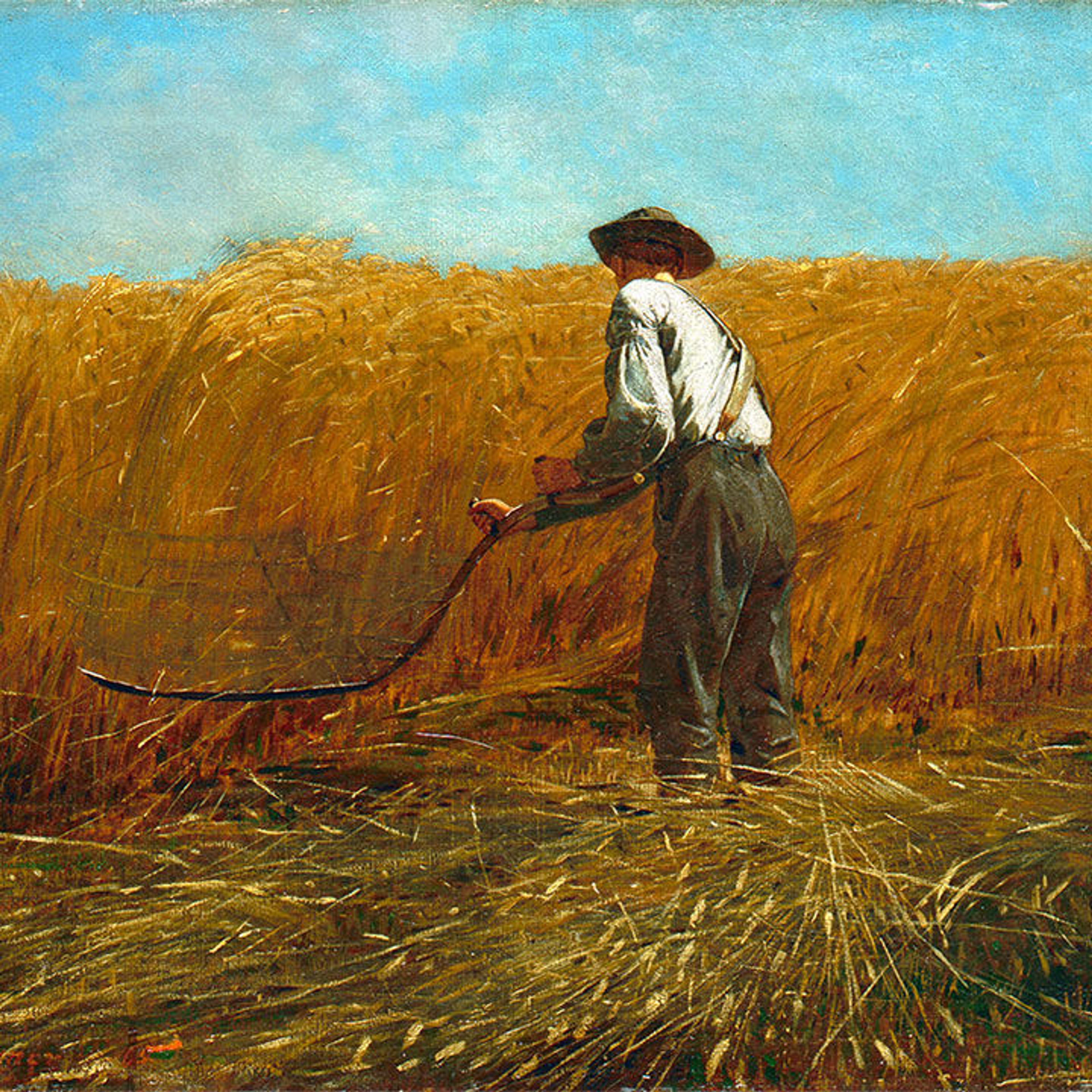Each month, The Met is sharing videos, essays, and other media that speak to a specific theme relevant to our present circumstances. This month, we bring you a selection of artworks that have brought us calm in unsettling times. Solace comes in many forms, from an inspiring message or a moment of respite to spending time with a beautiful work of art. Stephanie Herdrich, a curator in the American Wing, opens with a meditation on Winslow Homer.
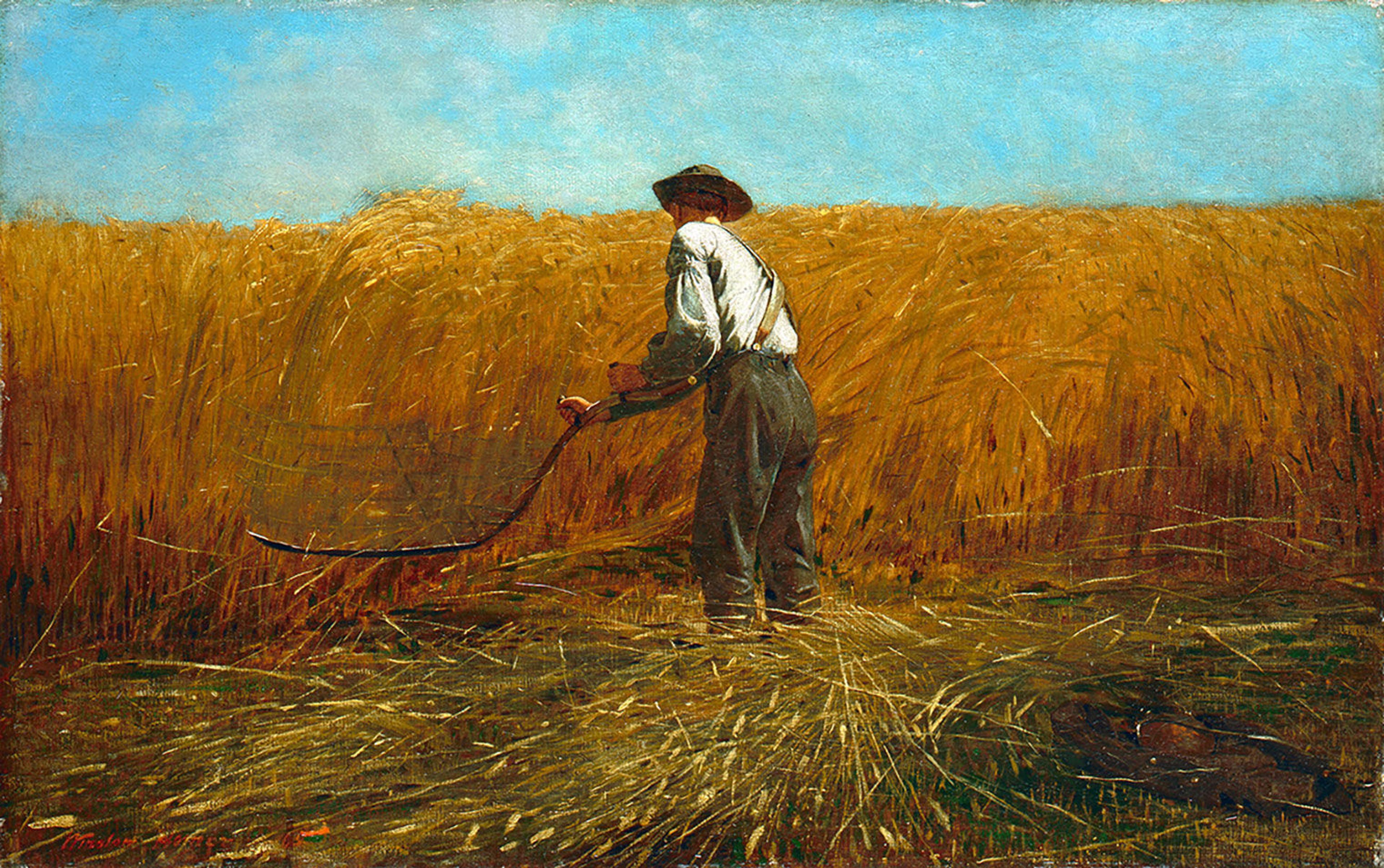
Winslow Homer (American, 1836–1910). The Veteran in a New Field, 1865. Oil on canvas, 24 1/8 x 38 1/8 in. (61.3 x 96.8 cm). The Metropolitan Museum of Art, New York, Bequest of Miss Adelaide Milton de Groot (1876–1967), 1967 (67.187.131)
Winslow Homer's iconic painting of a lone farmer reaping a vast field of wheat has a striking tranquility. Elegant in its simplicity, Homer's composition includes just a few essential elements: wheat, sky, farmer. Meditating on the painting, I see the bright blue sky and feel the warmth of the strong sunlight. I imagine the sound of the scythe slicing the tall wheat and the smell of freshly cut stalks. The painting reminds me of the reassuring predictability of the seasons: we reap what we sow.
Yet Homer pointedly locates the painting in time. In one corner, we see the man's discarded Union Army jacket and canteen. Painted in summer 1865, not long after General Lee surrendered at Appomattox and the assassination of President Lincoln, The Veteran in a New Field is a deeply symbolic painting—an elegiac tribute to what has been lost. The realities of war permeate the painting: the veteran's new field reminds us of his old field, the battlefield.
Ultimately, Homer's painting is about the return to productive, peaceful pursuits after the devastation of the American Civil War. It calls to mind this timeless passage from Isaiah 2:4: "They shall beat their swords into plowshares; and their spears into pruning hooks: nation shall not lift up sword against nation, neither shall they learn war anymore." The farmer's work harvesting wheat will yield food to nourish the nation. Today, as I watch spring arrive, secluded from my normal daily life, I take solace in the farmer's labor and am inspired by his hope and resolve.
Amusements at Higashiyama in Kyoto
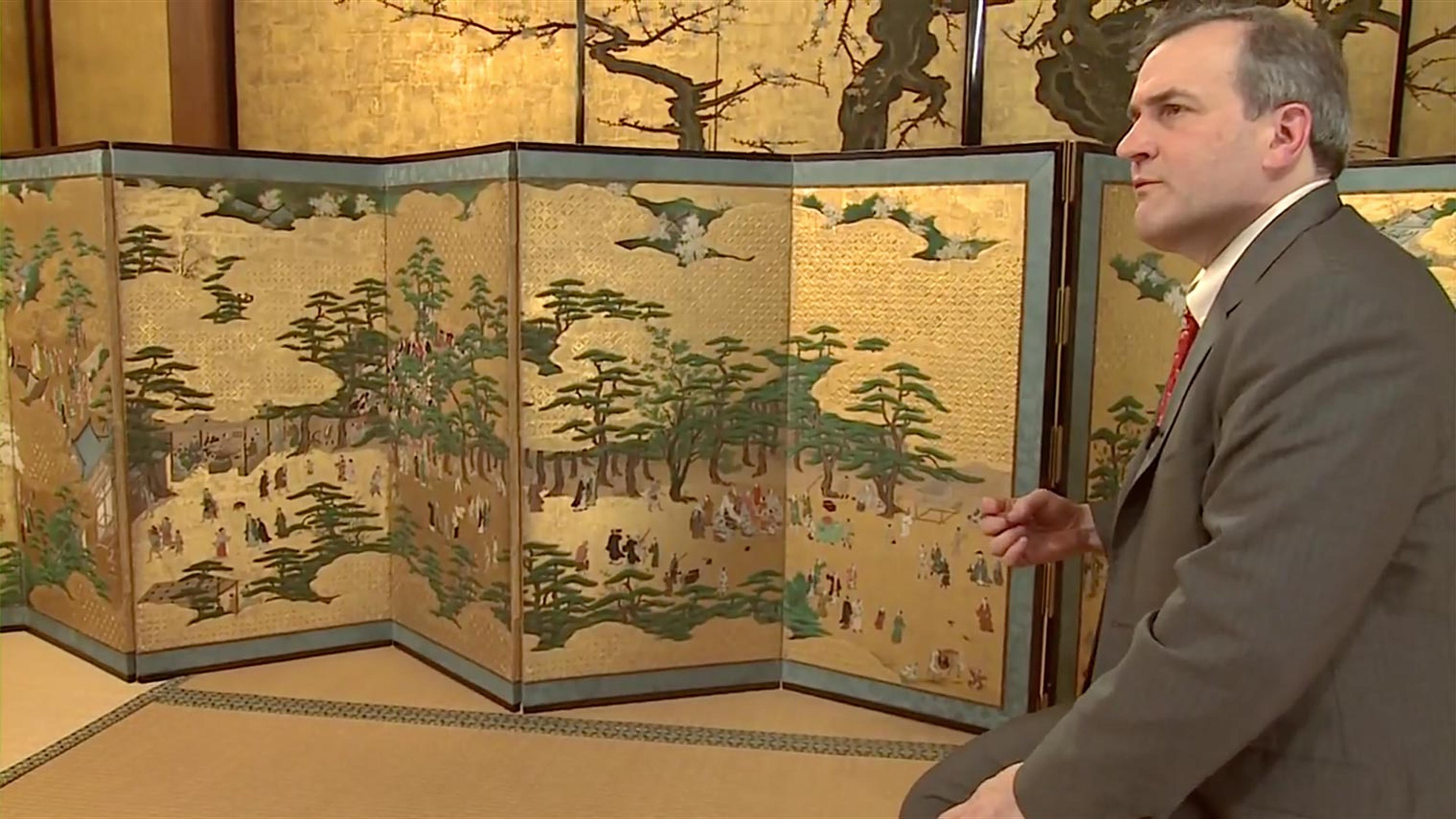
Kano School. Amusements at Higashiyama in Kyoto (狩野派 東山遊楽図屏風), ca. 1620s. Japan. Edo period (1615–1868). Pair of six-panel folding screens; ink, color, gold, mica, and gold leaf on paper, each: : 33 1/16 in. x 8 ft. 11 1/2 in. (84 x 273 cm). The Metropolitan Museum of Art, New York, Purchase, 2013 Benefit Fund and Mary and James G. Wallach Foundation Gift, 2014 (2014.491.1, .2)
This seventeenth-century painted screen is set in the eastern hills of Kyoto, then the capital of Imperial Japan, during the peak of cherry-blossom season. The screen depicts a series of vignettes—such as samurai sharing sashimi or visiting altars—in a remarkable cross-section of daily life. As in the Homer painting above, such moments of peace had been unimaginable for generations and were a solace to a city that had just ended a century of civil war. "What we see here," says curator John Carpenter in an episode of MetCollects, "is a world at peace." Perhaps in this screen we can see something like the return to bustling life that awaits us.
Finding Quiet
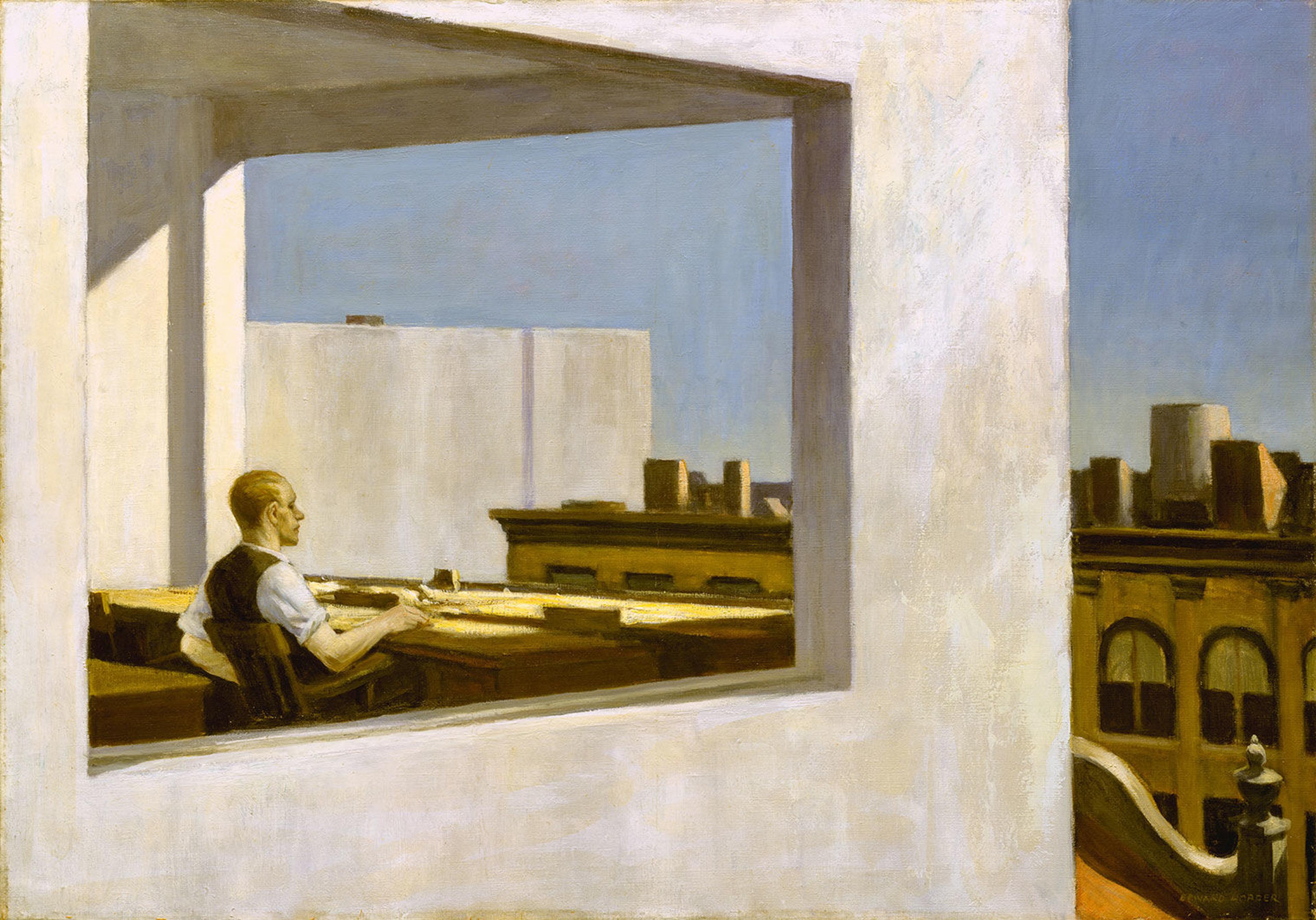
Edward Hopper (American, 1882–1967). Office in a Small City, 1953. Oil on canvas, 28 x 40 in. (71.1 x 101.6 cm). The Metropolitan Museum of Art, New York, Purchase, George A. Hearn Fund, 1953 (53.183)
Under social distancing, cities are beginning to look like Edward Hopper paintings. But cities have always had oases of quiet. As Senior Collections Cataloguer Jennifer Meagher says in this episode of Connections, "When people ask me where I live and I tell them I live in New York, the response I often get is, 'How can you live in New York? There's no peace or quiet.'" Hear Meagher reflect on the many different kinds of quiet—domestic, meditative, tense—that she finds in The Met's galleries, from Edward Hopper's scenes of urban alienation to Ansel Adams's wintry gelatin-silver prints of Yosemite and a delightful Ming dynasty painting called Garden of the Inept Administrator.
Art in Public Places
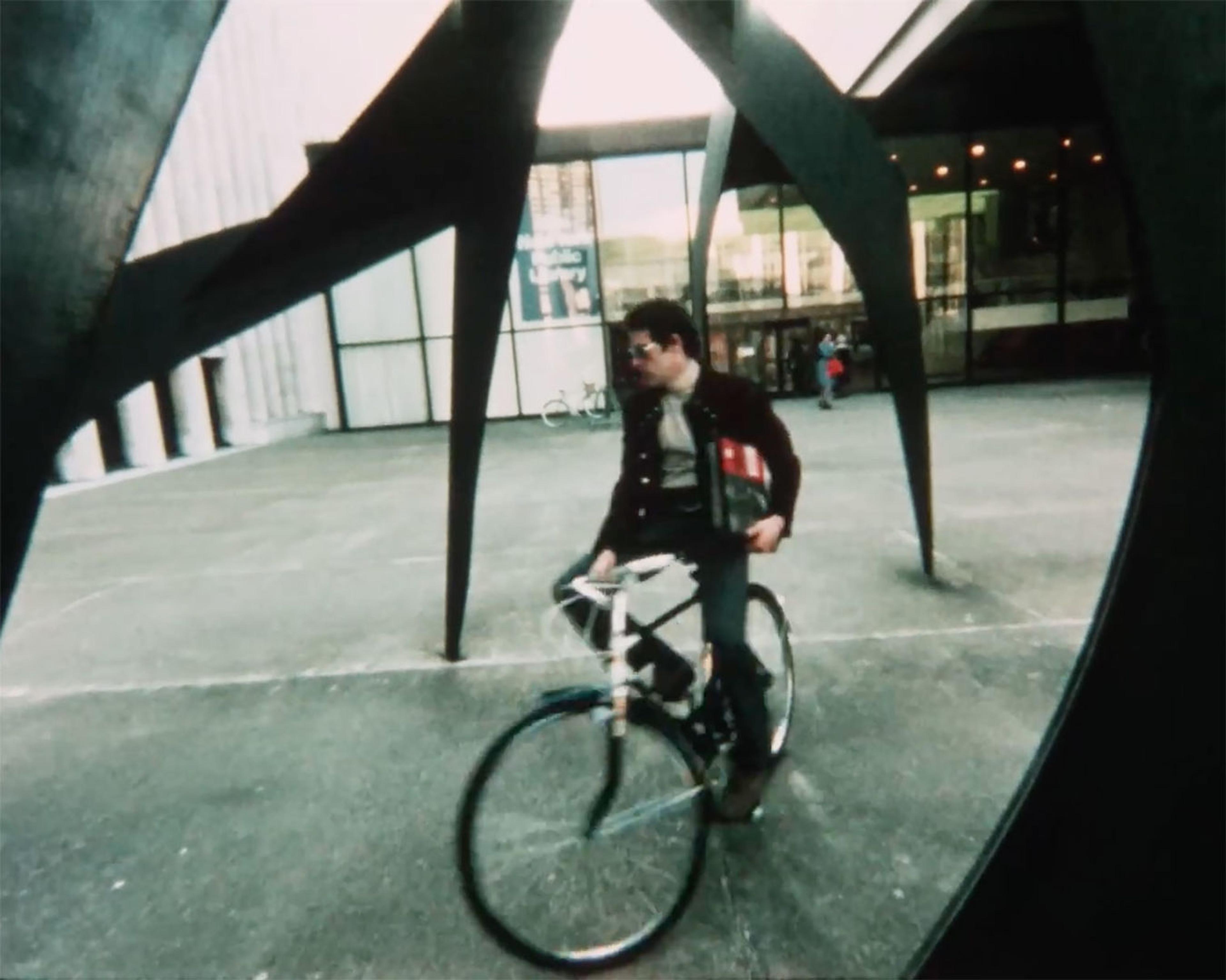
Art in Public Places (still from film), 1973
If the thought of a midday stroll no longer brings comfort, join the artist and writer Russell Connor on this calming tour of public art around Manhattan in the early 1970s. From Augustus Saint-Gaudens's statue of General Sherman at Grand Army Plaza to Isamu Noguchi's Sunken Garden, Connor surveys the landscape with curiosity, wonder, and wry humor. "Maybe because the competition is so stiff, so ingenious, and the energy is so supercharged," Connor says, "the streets and parks of Manhattan are really a great place to explore what happens to art—and what happens to us—when art steps out from behind the velvet rope, outside the pristine shelter of museums, galleries, private collections, and stands each day in the public eye."
Book of Flower Studies

Master of Claude de France. Book of Flower Studies (detail), ca. 1510–15. Opaque watercolor, organic glazes, gold and silver paint, iron and carbon-based ink and charcoal on parchment, 6 7/16 x 4 1/4 x 1 1/4 in. (16.4 x 10.8 x 3.2 cm). The Metropolitan Museum of Art, New York, Purchase, The Cloisters Collection, Lila Acheson Wallace Gift, and Rogers Fund, 2019 (2019.197)
Spring is the season of rebirth and new beginnings, marked every year by the first crocus blossoms. In this marvelous Book of Flower Studies from sixteenth-century France, the humble dandelion and oxeye daisy sit beside exquisitely rendered columbines, foxgloves, blackberries, and fava beans. The MetCollects photo essay is complete with elegant captions by curator Barbara Drake Boehm and horticulturist Caleb Leech.
Chess: East and West, Past and Present
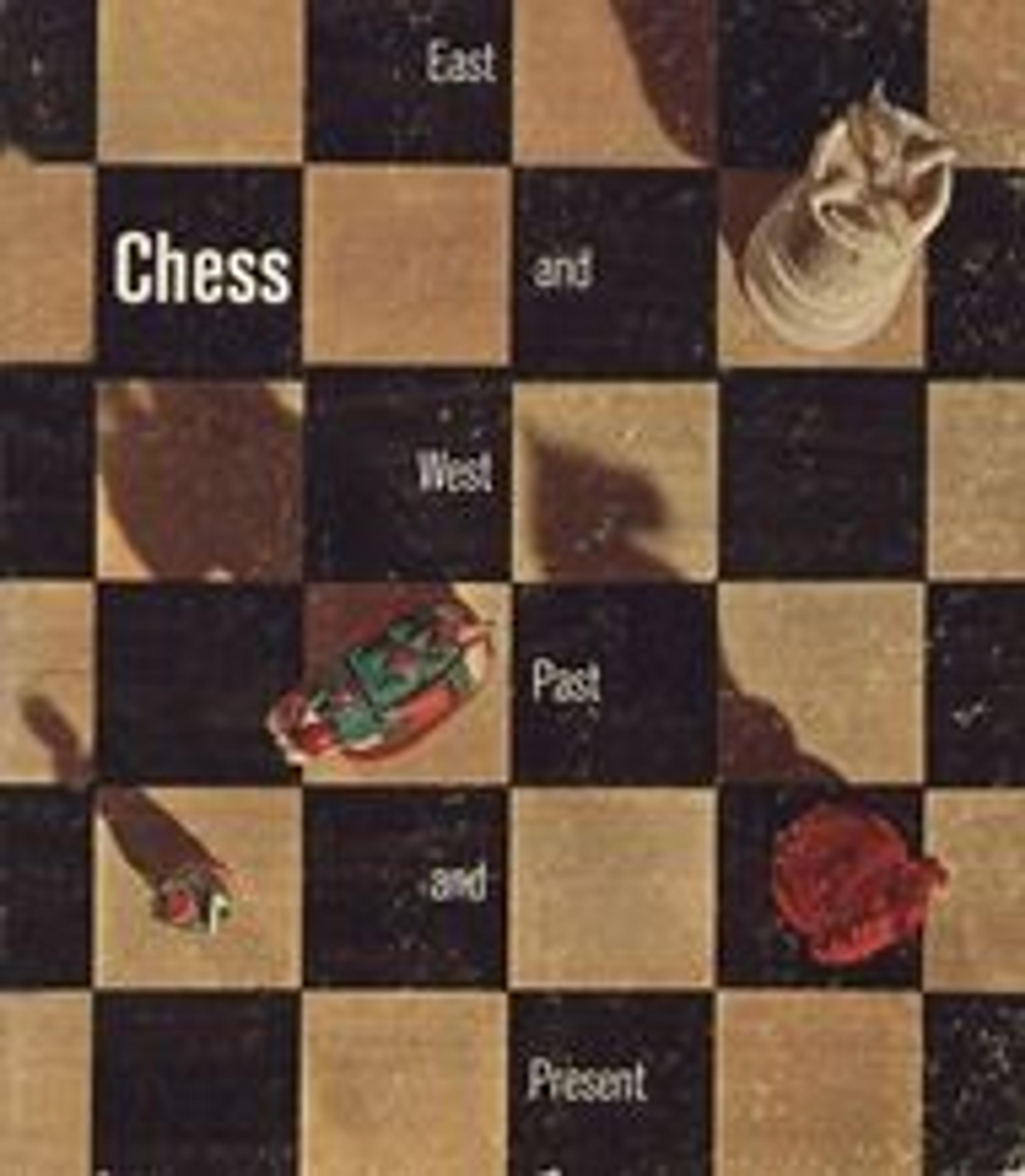
Today, as we look for ways to connect with others, we can find solace in games and mental stimulation. Chess originated in India in the sixth century A.D., and modern variants were developed in southern Europe. Through a collection of chess sets gifted to the Museum, this book highlights how chess pieces—like tiny statues—have reflected tumultuous moments in time for hundreds of years.
If you're curious to learn more, check out this short essay from the Timeline of Art History about board games from ancient Egypt and Mesopotamia.
Looking for activities to try at home? Families and teachers can sign up for weekly emails bringing you the best of #MetKids. Subscribe to the #MetKids newsletter.
